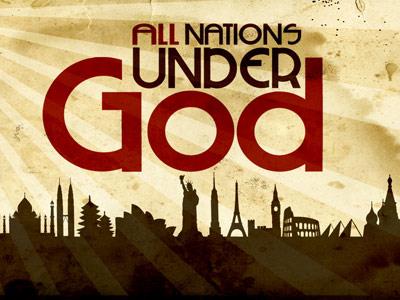-
Revelation (Part 8) Series
Contributed by Scott Bayles on Feb 29, 2024 (message contributor)
Summary: In Revelation 13, we uncover the Imagery of the Beast, the Intent of the Beast, and the Identity of the Beast.
(Part 8)
Scott Bayles, pastor
Blooming Grove Christian Church: 11/19/2017
If you’re just joining us, we are eight weeks into the curious and often confusing book of Revelation. As enigmatic as Revelation may be, I hope you’ve found this series both enlightening as encouraging. And I hope you’ll stick with me to the end… because that’s the best part.
Last week, in Revelation 12, we witnessed two wonders—a mother and monster. The mother symbolized faithful Israel and gave birth to the Messiah. The monster—a scarlet, seven-headed dragon—represented Satan. When Satan fails to devour Christ on earth, he wages war in heaven and is cast down in defeat. The devil then directs his wrath at Christians—Christ’ brothers and sisters on earth. And, in order to slaughter as many Christians as possible, the dragon enlists the aid of two more beasts, which brings us to chapter 13.
If you have a Bible or an app on your phone open it to Revelation 13. The beast introduced in this chapter is perhaps the most mystifying, yet mesmerizing character in all of Revelation. All sorts of sensational claims have been made concerning the identity of the beast, the mark of the beast and the number of the beast, which John tells us is 666. Likely candidates have included Adolf Hitler, Osama bin Laden, and the Roman Catholic Church. American president George W. Bush and British prime minister Tony Blair have also surfaced on the lists of prophecy pundits.
Rather than joining in this sensationalistic game of pin-the-tail-on-the-beast, Christians need only go to Scripture to find the answer. Before we get to the identity of the beast, however, we need to understand the imagery of the beast.
• THE IMAGERY OF THE BEAST
As the previous chapter closes, Satan—the dragon—dramatically takes his stand upon the seashore, as if calling forth his beastly servant from the ocean depths. Suddenly, the sea begins to bubble as John writes, “Then I saw a beast rising up out of the sea. It had seven heads and ten horns, with ten crowns on its horns. And written on each head were names that blasphemed God. This beast looked like a leopard, but it had the feet of a bear and the mouth of a lion! And the dragon gave the beast his own power and throne and great authority” (Revelation 13:1-2).
The first thing we should notice is that the beast has seven heads and ten horns, just like the dragon. Later, we discover that the beast is red in color, also like Satan. This similarity between the dragon and the beast symbolizes the bond between them. Just as people are made in the image of God, the beast is made in the image of Satan. The dragon’s horns represent power and his crowns symbolize authority. Now these qualities are transferred to the beast. The beast of Revelation is a perverse puppet. Follow the strings of this monstrous marionette and you find Satan himself.
But the dragon isn’t the only monster to which the beast bears a resemblance. John says, “This beast looked like a leopard, but it had the feet of a bear and the mouth of a lion!” This imagery is drawn, once again, from the Old Testament; specifically, from Daniel 7. In Daniel 7, Daniel experiences an apocalyptic vision that begins with a great storm churning the surface of the sea. Suddenly, four huge beasts explode to the surface. One looks like a leopard. One looks like a bear. One looks like a lion. Daniel describes the fourth beast as “terrifying, dreadful, and very strong” and having ten horns.
The beast John sees cleverly combines elements from each of Daniel’s four beasts into one hideous monster. An angelic guide assures Daniel, “These four huge beasts represent four kingdoms that will arise from the earth” (Daniel 7:17 NLT). This, of course, helps us identify the beast of Revelation, but we’ll get to that later. For now, let’s focus on the implications of this imagery.
First, God depicts Satan as a scary, seven-headed dragon. Then he uses that same imagery, along with an abnormal amalgamation of aggressive animals, to depict this beast. Why? Why create such a horrifyingly hideous picture?
I believe God wanted to show John, and us by extension, what evil really looks like. We need these shocking images because we don’t always recognize evil for what it is. The world teaches us to call unnice things by nicer names. Instead of cheating, its creative accounting. Instead of lying, its massaging the truth. Instead of profanity, its colorful language. Instead of fornication, its consensual sex. Instead of adultery, it an affair. The list goes on and on. The Bible says, “Woe to those who call… evil good,” yet that’s just what we’ve done.
Through the use of monstrous metaphors, God teaches us to see evil more clearly. God wants John to see that Satan and those serve his cause are not just misunderstood, they’re monsters—ugly, destructive, and unholy. Now, in addition to the imagery used to describe the beast, this chapter also reveals the intent of the beast.

 Sermon Central
Sermon Central



